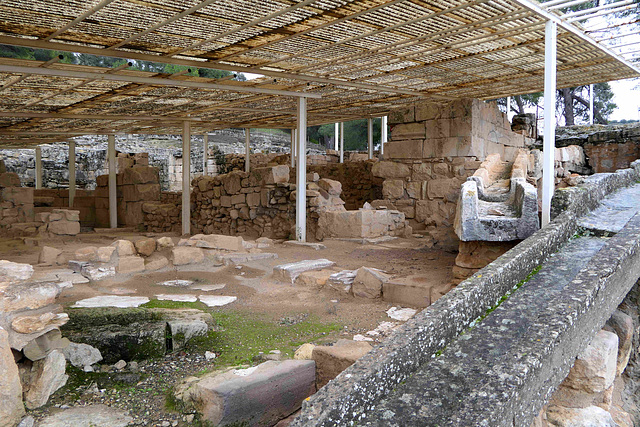Agia Triada
Agia Triada
Agia Triada
Agia Triada
Agios Ioannis - Agios Pavlos
Agios Ioannis - Agios Pavlos
Agia Triada
Agia Triada - Agios Georgios
Agia Triada - Agios Georgios
Agia Triada - Agios Georgios
Agia Triada - Agios Georgios
Crete
Crete
Preveli Monastery
Preveli Monastery
Preveli Monastery
Spili - Agios Rafail
Spili - Agios Rafail
Crete - Plakias
Crete - Sellia
Crete
Peristeres Beach
Armeni - Late Minoan necropolis
Armeni - Late Minoan necropolis
Armeni - Late Minoan necropolis
Armeni - Late Minoan necropolis
Armeni - Late Minoan necropolis
Armeni - Late Minoan necropolis
Location
Lat, Lng:
You can copy the above to your favourite mapping app.
Address: unknown
You can copy the above to your favourite mapping app.
Address: unknown
Keywords
Authorizations, license
-
Visible by: Everyone -
All rights reserved
-
3 visits
Agia Triada


Agia Triada is an archaeological site with the remains of a palace complex in the west of the Messara Plain, about two kilometers northwest of the ruins of Phaistos, a Minoan palace complex. There was already an extensive settlement at the beginning of the Pre-Palace period at the end of the 4th millennium BC. Tholos tombs, east of the fenced excavation area, are dated to the Pre-Palace period. Due to the sedimentation of the Timbaki basin at the mouth of the Geropotamos, Agia Triada lost its landfill around 1900 BC. the direct access to the sea that existed in the early Minoan period. During the New Palace period, between 1600 and 1550 BC, a small palace complex was built known as the "great Minoan villa." The settlement at Agia Triada lay east of the palace, which is considered the political and sacred administrative center. The wall paintings are in the same style as the paintings at Knossos.
The palace of Agia Triada was destroyed around 1450 BC. Afterwards, around 1400 BC, a Mycenaean megaron was built on its ruins. To the north, below the complex, in the post-palatial period, a development of dwellings and warehouses was built. It represents a "Minoan market village." It is assumed that artisans and merchants who maintained intensive trade relations with North Africa settled here.
To the north the remains of two large buildings have been preserved, one of them megaron-like, which are dated to 1350 to 1250 BC. During the decline of the Minoan/Mycenaean culture, the palace of Agia Triada was destroyed around 1250 BC. After that, the site was used as a place of worship. Statuettes were placed in the open air. The cult continued until the the 11th and 10th centuries BC and resumed in the 7th century BC.
The palace of Agia Triada was destroyed around 1450 BC. Afterwards, around 1400 BC, a Mycenaean megaron was built on its ruins. To the north, below the complex, in the post-palatial period, a development of dwellings and warehouses was built. It represents a "Minoan market village." It is assumed that artisans and merchants who maintained intensive trade relations with North Africa settled here.
To the north the remains of two large buildings have been preserved, one of them megaron-like, which are dated to 1350 to 1250 BC. During the decline of the Minoan/Mycenaean culture, the palace of Agia Triada was destroyed around 1250 BC. After that, the site was used as a place of worship. Statuettes were placed in the open air. The cult continued until the the 11th and 10th centuries BC and resumed in the 7th century BC.
- Keyboard shortcuts:
Jump to top
RSS feed- Latest comments - Subscribe to the comment feeds of this photo
- ipernity © 2007-2025
- Help & Contact
|
Club news
|
About ipernity
|
History |
ipernity Club & Prices |
Guide of good conduct
Donate | Group guidelines | Privacy policy | Terms of use | Statutes | In memoria -
Facebook
Twitter

Sign-in to write a comment.